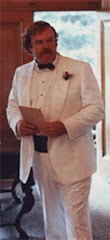Micro-movies share something important with novels. Consider how movies get seen. On a large screen in an auditorium, a social viewing, then to a smaller TV screen in a home, often seen again with others around, to a smaller screen on a computer, to an even smaller screen on a Blackberry or other electronic device. These last two viewings, certainly the latter, are solitary events. Watching a movie on a Blackberry, say, the viewer controls the rate of perception, which never happens at a theater. Think about that. Need a break? Press pause and come back to the movie later. Something is confusing? Go back and watch it again. Moreover, the viewer is physically attached to the device, or should be, by earphones, a cable, the only reasonable way to listen to audio on a micro-movie. The viewer has the same power as the reader of a book to control how the work is perceived.
Moreover, the smaller the screen, the more intense the image. Not less. More. The more concentrated, the more vibrant. By the Blackberry, you cannot tell the difference between a megamillion Hollywood movie and a zero budget micro-movie. Think about that!
The intimacy, the solitary act, of watching a micro-movie on a Blackberry encourages stories that are more serious, more difficult, than the usual Hollywood fare. Watching a micro-movie is like reading a good book: measured, focused, deliberate, reflective.
Movies can be made to take advantage of this environment. Movies can be made just for the Blackberry and other devices You could call the company Small Screen Video.
Wait, wait! I'm already doing that.
Saturday, November 13, 2010
Subscribe to:
Post Comments (Atom)











No comments:
Post a Comment